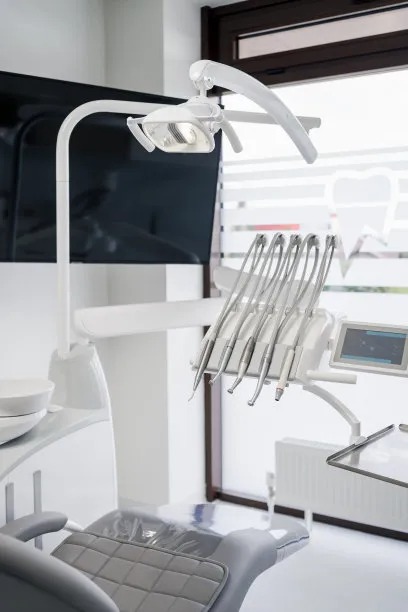Revolutionary Advances in Dental Implant Treatment Enhancing Recovery and Aesthetic Outcomes for Patients Seeking Lasting Solutions
Summary: This article discusses the revolutionary advances in dental implant treatments that significantly enhance recovery times and aesthetic results, providing patients with lasting dental solutions. It highlights four key aspects: innovations in implant materials, advancements in surgical techniques, improved post-operative care, and developments in aesthetic restoration. Each aspect is examined in detail, reflecting how these innovations contribute to not only successful implant integration but also to patient satisfaction and overall quality of life. With these transformative approaches, patients seeking long-term dental solutions are better equipped to enjoy optimal oral health and aesthetics.
1. Innovations in Implant Materials

Advancements in dental implant materials have substantially improved their biocompatibility and longevity. Cutting-edge materials such as zirconia are gaining popularity due to their excellent aesthetic properties and resistance to corrosion. This innovation allows for implants that closely resemble natural teeth, making them an attractive option for patients concerned about aesthetics and durability.
Moreover, recent developments in surface treatment technologies, such as sandblasting and acid-etching, enhance the osseointegration process. These techniques promote better bone integration, reducing the time required for implants to "fuse" with the jawbone. Patients often benefit from enhanced stability, which can lead to a lower risk of implant failure.
Additionally, bioactive coatings on implants are a game-changer for enhancing healing. These coatings can speed up the recovery process by encouraging bone growth around the implant, thereby improving success rates. As materials continue to evolve, patients can expect even greater outcomes from their dental implants in terms of strength, integration, and aesthetics.
2. Advancements in Surgical Techniques
Modern surgical techniques have revolutionized the dental implant procedure, making it less invasive and more precise. Techniques such as flapless surgery allow for implant placement without the need to cut the gum tissue, which minimizes trauma and leads to faster recovery times. This method significantly reduces post-operative pain and swelling for patients, enhancing their overall experience.
Furthermore, the use of 3D imaging and computer-guided implant surgery has transformed planning and placement accuracy. This technology allows dental professionals to visualize the exact placement of implants before surgery, ensuring optimal alignment and positioning. Patients can also enjoy reduced surgery time and, consequently, a more comfortable procedure.
Lastly, sedation dentistry offers patients a stress-free experience during surgery. This advancement enables individuals to remain relaxed and pain-free throughout the procedure, leading to less anxiety associated with dental treatments. Enhanced comfort during surgery can lead to improved patient satisfaction and better adherence to post-operative care protocols.
3. Improved Post-Operative Care
The advancements in post-operative healthcare for dental implants have made a significant impact on recovery and outcomes. Personalized recovery plans that adapt to individual patient needs ensure a smooth transition during the healing process. Effective pain management strategies, including the use of localized anesthesia and advanced medications, contribute to a more comfortable recovery period.
Follow-up appointments are now more structured, with technology enabling remote monitoring of healing progress. Dental professionals can assess the status of the implant through telehealth and adjust treatment protocols without the need for in-person visits. This innovation not only saves time for patients but also ensures continuous support and care.
Nutritional guidance is also part of the improved recovery modalities. Diet plays a crucial role in healing; therefore, providing patients with nutritional recommendations can promote faster bone growth and recovery. Emphasizing a balanced diet can lead to better implant success, thus reinforcing the importance of interdisciplinary approaches in dental care.
4. Developments in Aesthetic Restoration
The field of dental implants has also witnessed remarkable growth in aesthetic restoration techniques. Innovations such as custom abutments and high-quality, lifelike prosthetics have emerged, allowing for personalized treatment that meets individual patient preferences and facial aesthetics. These enhancements ensure that implants look as natural as possible, offering results that blend seamlessly with existing teeth.
Furthermore, the use of digital smile design technology aids in creating a visual representation of the desired outcome before the actual procedure takes place. This interactive approach engages patients in their treatment planning and provides peace of mind regarding aesthetics. Patients can visualize expected results, leading to increased satisfaction with the final outcome.
Additionally, advancements in materials used for crowns and bridges have made a significant difference in aesthetics and longevity. High-quality materials mimic the translucency and color variations of natural teeth, thus enhancing the overall look of the restoration. With these advancements, patients can feel confident in their smile, knowing that their dental implants will not only function effectively but also look fantastic.
Summary:
The continuous revolution in dental implant treatments has set a new standard for recovery and aesthetic outcomes, providing patients with lasting, effective solutions. By exploring innovations in materials, advancements in surgical techniques, improved post-operative care, and developments in aesthetic restoration, this article emphasizes the comprehensive benefits these scientific advancements bestow upon patients seeking dental implants.
This article is compiled by Vickong Dental and the content is for reference only.


